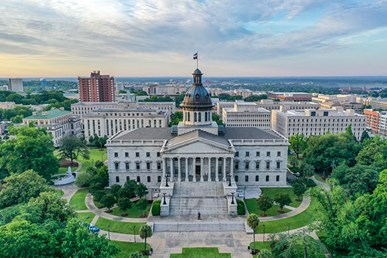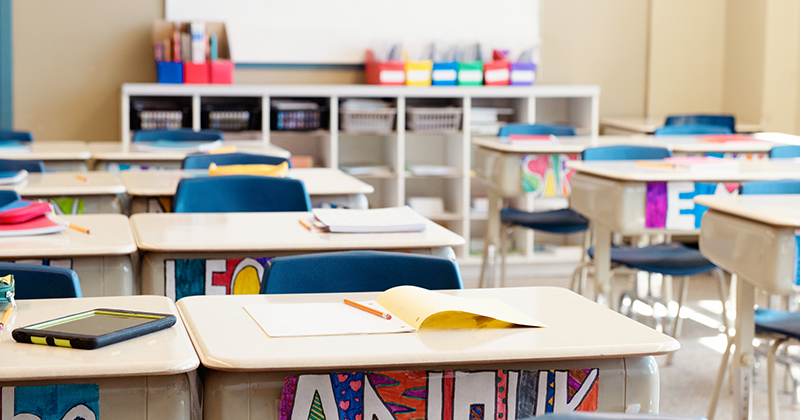Extended Session: The SC Legislature and The Massive Mound of Money
In the post-modern “Christmas” song “Grandma Got Run Over by a Reindeer,” the surviving family members debate what to do with the dearly departed’s gifts after her untimely demise. Should they open grandma’s presents? Or should they send them back? To which a chorus responds in horror: “send them back?”
Oh, the horror of sending back “free” anything…or even saving it for a rainy day. Delayed gratification is so 20th century. That is why the coming weeks will serve as the ultimate test for the Republican-dominated South Carolina General Assembly.
NEW STATE DOLLARS IN PLAY
The House is slated to return for a budget session on Tuesday, June 8, and there will be lots of candy in the window. Just look at what the budget writers have to play with for the fiscal year beginning July 1, 2021:
- Recurring Funds (“New Money”): $385.8 million
- Non-Recurring Funds (One-Time Money): $1.335 billion (incl carryover from last FY)
- Non-Recurring SRS Plutonium Settlement: $525 billion (eventually)
- TOTAL: $2.245 billion
The reason that the Palmetto State has any recurring or non-recurring funds at all is that our state reopened more quickly than “blue” states. National and international data shows South Carolina ranks in the bottom ten in COVID “economic suppression” measures and in the top ten for the robustness of our recovery. (Perhaps there’s a link there?)
Our state unemployment trust fund is also one of only four of the 50 + DC that is healthier today than before the pandemic and we have borrowed $0 from the feds to pay unemployment benefits.
South Carolina was also the second state (after rock-ribbed Montana) to opt out of the continuing effort to pay our citizens a federal bonus not to work. The number of states as of this writing taking similar action is up to 23: our Palmetto State led the way!
STATE SPENDING TRENDS
By the time the General Assembly left town earlier this month, both the House and Senate had passed their own versions of a FY 2021-22 budget. But since it is the House that will return to the drawing board first, it is worth reviewing what the House did in their earlier (March, 2021) blueprint.
With economic uncertainty still looming, that body had prudently placed about 70% of all non-recurring dollars ($500 million) into a new Pandemic Stabilization Fund. An additional $18.7 million was placed into the General Reserve Fund and $7.5 million into the Capital Reserve Fund.
Allocation of new recurring funds was a bit looser, with increased spending for public education, healthcare, criminal justice, transportation, and “statewide allocations.” “Statewide allocations” include state employee salaries and benefits, the Capital Reserve Fund and the Local Government Fund.
Here’s how the “old” 2021-2022 House budget stacked up to the year before (2020-2021) in terms of year-over-year growth:
- State or “General” Fund Spending was $8.94B (up from $8.75B)
- Federal Funds Spending was $9.16B (up from $8.81B) [not including COVID relief funds]
- “Other” Funds Spending was $12.08B (up from $11.92B) [ex: state university tuition income]
- Total Funds Spending was $30.18B (up from $29.48B)
Or, described another way, if the original 2021 SC House Budget Plan had passed into law, Total Spending Per Capita adjusted for inflation would have been $5,479 for 2020 compared to $5,402 for 2007.
STATE SPENDING RECOMMENDATIONS
Americans for Tax Reform found that South Carolina’s Per Capita Spending Growth over the last decade was the third lowest in the country (at 2%). But, as a rule, historic trend lines show that when we have it, we spend it. When we take in less, we spend less.
While that “strategy” might balance the budget year-to-year, it doesn’t create long-term certainty. And it certainly is precious little comfort to hardworking taxpayers who, come feast or famine, know they will pay the highest in the Southeast personal income tax rate.
Our recommendation for state funds is to continue to hold non-recurring funds in reserve, and fill rainy day funds. The General Assembly should also freeze spending at the level adopted only a few months ago to allow for a rebate to taxpayers or a reduction in our 7% personal income tax top rate. (For comparison purposes, North Carolina Senators unveiled a tax package at a news conference earlier this week that would slice their already lower 5.25% rate to 4.99%.)
NEW FEDERAL DOLLARS IN PLAY
Over $2 billion in new state money to spend sounds colossal. That is until we calculate South Carolina’s portion of the Biden $1.9 trillion American Rescue Plan Act (ARPA).
The Biden American Rescue Plan (ARPA)—better described as the “Blue State Bailout”—funds began arriving this week (May 24, 2021) and will keep coming until December 31, 2026. (You read that right: the emergency funds will be spent long after the end of the emergency.)
Biden ARPA SC State & Local Aid
- ARPA (State): $2.095 billion
- ARPA (Metropolitan Cities): $145 million
- ARPA (Other Local Governments): $442 million
- ARPA (Counties): $999 million
- ARPA (State Capital Projects): $188 million
- TOTAL: $3.869 billion
(Note: Does not include ARPA funds flowing into South Carolina in the form of direct payments to citizens or directly to Agriculture, Consumer Protection, , Education, Energy & Environment, Unemployment, Health & Human Services, Homeland Security, Housing, Small Business, Taxes, Technology, Transportation & Infrastructure and Veterans.)
Tallying COVID Education Aid
Because public schools have been the target of so much federal aid, it is worth concentrating our gaze on a snapshot of education accounting. Federal allocations to South Carolina public schools in the form of federal Elementary and Secondary School Emergency Relief Fund (ESSER) funds alone looks like this:
- ESSER (March, 2020): $216 million (55% spent as of 4/30/21)
- ESSER II (January, 2021): $940 million (0% spent as of 4/30/21)
- ESSER III (May, 2021): $2.112 billion (0% spent as of 4/30/21)
- TOTAL: $3.268 billion
So when you add up ARPA + ESSER you get a grand total of $7.137 billion.
That smoke you’re smelling? Our calculator is running out of zeros.
FEDERAL ARPA RECOMMENDATIONS
So, what to do with all that federal money? Originally, due to a last-minute Senate amendment, it appeared the U.S. Treasury Department might attempt to prevent fiscally-solvent states from doing anything actually useful with the funds, like reducing taxes, shoring up shaky trust funds, or reducing debt.
But according to the Tax Foundation, all of those options may be on the table after all to due Treasury’s subsequent “interim rule” on ARPA funds. But regardless of where Biden’s Treasury rule ultimately lands, Palmetto Promise Institute recommends that South Carolina proceed with wise fiscal policy…and dare the federal government to take us to court to tell us we can’t. (Of note: the U.S. Supreme Court had something to say about this type of attempted fiscal “dragooning” of states in their decision striking down Obamacare’s Medicaid expansion mandate).
In general, we urge the General Assembly to think BIG PICTURE: what are the one-time expenditures that could help address the underlying structural reforms that we always talk about but never seem to get to (or finish)? We’re looking at you, tax reform, transitioning to a defined contribution pension plan for new state hires, and student-centered education finance restructuring!
Here is what the General Assembly should do:
- Return most of the ARPA funds to the federal treasury. Ah, the old principled stand. Always a longshot, but worth mentioning nonetheless. In education alone, we have $3 billion in ESSER funds left unspent and have authorized $1.9 billion in federal CARES funds. We should return as much federal funding as possible. Would that we had done that in 2009 with ARRA.
- Set priorities for ARPA funds. First, the state should define the specific pandemic-related problems that are unique to South Carolina that could be rectified by encouraging free enterprise solutions. Funds should not be used for recurring expenses or for offices or entities or programs that could require state funds in the future after the federal dollars run out. Expanding Medicaid would be out based on that parameter.
- Insist on strict accountability for ARPA funds. For the reason of the sheer volume of funds alone, we should demand the highest level of accountability for ARPA funds drawn down and expended. It would be worth following the lead of other states in creating a joint Senate-House ARPA Legislative Oversight panel or an entity similar to that created for ARRA funds (2009) by proviso. At the very least, existing legislative oversight committees should be active in reviewing ARPA expenditures and requiring audits where ARPA funds are involved.
- Cut taxes. According to that pending Treasury rule, only states that have seen their revenues rise due to organic growth are in play for tax cuts that would be allowable under ARPA. That would clearly include South Carolina! (Remember when we lost $1 billion and still finished 2020 in the black?) As long as state revenue with tax cuts does not fall below the inflation-adjusted Fiscal Year 2019 level, the U.S. Treasury says they would not seek to claw back ARPA funds used for tax cuts. (But again, the U.S. Treasury should not be dictating South Carolina’s fiscal policy.)If they go back on their guidance, let the feds tell us we can’t cut taxes on our people in response to a pandemic! Note: Local governments have no restrictions at all in their ability to cut taxes due to the positive fiscal effects of the arrival of ARPA funds.
- Encourage free enterprise. Why not provide direct grants to small businesses harmed by government-mandated COVID “economic suppression” measures and/or allow businesses to deduct for state tax purposes any costs of doing business paid with federal PPP loans?
- Pay current state pensions costs & retiree benefits. Federal rules won’t allow ARPA funds to go as a block to the state pension fund to shore it up, but current state employees could receive regular pension payments from ARPA funds. That would help the financial integrity of the system going forward. State government retiree health benefits, which is a huge unfunded liability, could be paid using ARPA funds.
- Pay down state and local debt. South Carolina is regularly dinged in the ALEC Rich States, Poor States ratings for high local government debt. Creative use of ARPA funds could lead to the paying down of local indebtedness.
- Invest in broadband. This is an actual legitimate purpose for spending federal dollars that are dedicated to capital expenditure if they cannot be returned. Non-governmental broadband providers should be given priority: harness and incentivize industry expertise instead of building more bunglesome bureaucracy.
- Fix our fractured education funding formula. Our structure for funding education is broken…and everyone knows it. Too much money gets stuck in administration instead of flowing to classrooms. What better time to transition to a truly student-centered “EFA 2.0” while every local school district is flush with federal cash that they can spend largely at their own discretion? It’s the perfect “hold harmless” scenario. We have to start spending smart before spending more if we are ever going to deliver the promise of a great education for every student in our state.
- Education Scholarship Account Grants and other grants for young South Carolinians. Our recommendation #10 is last, but in many ways the most important COVID rebound idea of all. In response to schools, daycares, and businesses being temporarily closed or out of business, it would be an allowable expense for the state government to provide grants to working families whose education has been disrupted by the pandemic. ESA Grants are taking the country by storm in 2021, providing what pandemic-harmed children need most: an education customized for their unique needs and potential that will help them recover more quickly.
On November 3, 2020, Republicans won a huge victory in legislative elections in South Carolina. Both chambers are now overwhelmingly GOP. But the proof is in the proverbial pudding. The next few weeks will tell the tale. Will the people get the fiscally conservative government they voted for that day, or will taxpayers be the first to drown in new state and “free” federal money?





